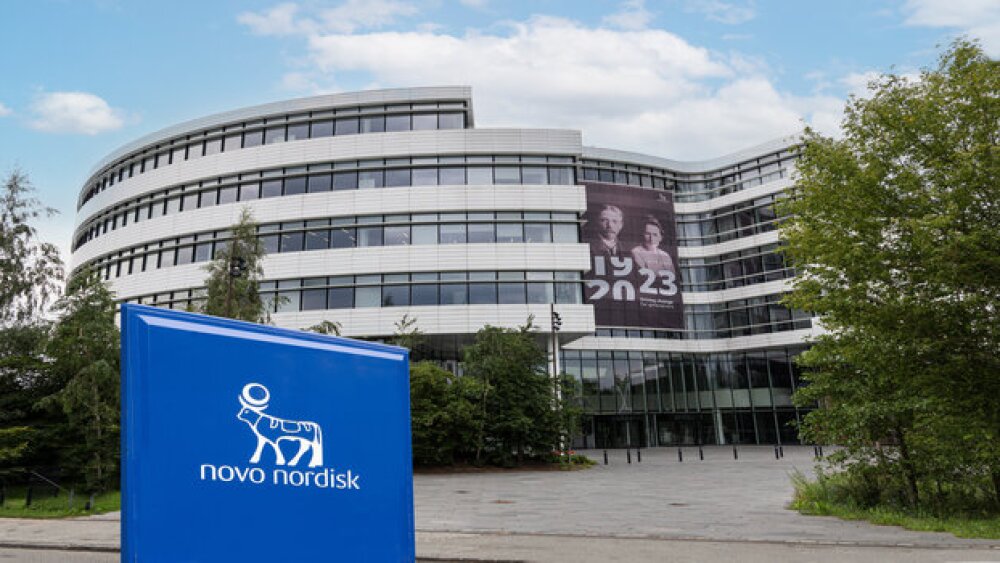LOS ANGELES, Oct. 30 /PRNewswire-FirstCall/ -- Schering-Plough Corp. and the European Organisation for the Research and Treatment of Cancer (EORTC) announced long-term follow-up results from the landmark Phase III trial conducted by the EORTC and the National Cancer Institute of Canada (NCIC) that showed the combination of TEMODAR (R) chemotherapy (temozolomide) Capsules and radiation therapy significantly prolonged survival in patients with glioblastoma multiforme (GBM) versus radiation treatment alone and that a survival benefit remains with longer follow up. These data were presented at the 49th Annual Meeting of the American Society for Therapeutic Radiology and Oncology (ASTRO).
“In 2004, the data demonstrated that temozolomide therapy, taken during and following radiation, offers significantly greater median overall survival than radiotherapy alone (14.6 versus 12.1 months, p less than 0.0001),” said Dr. Rene-Olivier Mirimanoff, professor and chairman, Department of Radiation Oncology, University Hospital, Lausanne, Switzerland. “With longer follow-up, the data continue to show patients benefit from the combined therapy with potential increased long-term survival outcomes.”
In the study, the two-, three- and four-year survival rates for the combination temozolomide/radiation therapy compared to radiation therapy alone were respectively 27.2 percent versus 10.9 percent, 16.0 percent versus 4.4 percent and 12.1 percent versus 3.0 percent.
“In 2004, the addition of temozolomide to radiotherapy demonstrated a statistically significant survival benefit with an oral therapy that has very acceptable toxicity and a favorable benefit-risk profile,” said Robert J. Spiegel, M.D., FACP, Chief Medical Officer and Senior Vice President, Schering-Plough Research Institute. “These follow-up survival findings should provide further hope for patients and physicians fighting this terrible disease.”
In the study, 573 patients were randomized between July 2000 and March 2002. Patients between the ages of 18-70 years with newly diagnosed GBM were eligible. Patients received either focal radiotherapy plus temozolomide at 75mg/meters squared daily continuously for 42 (up to 49) days, followed by up to six cycles of adjuvant temozolomide (150-200 mg/meters squared daily for five days every 28 days) or focal radiotherapy alone. Primary endpoint of the study was overall survival, with secondary endpoints of progression-free survival and quality of life. Initial study results presented in 2004 at the annual meeting of the American Society of Clinical Oncology and fully published in the New England Journal of Medicine in March 2005, found a median overall survival of 14.6 months in patients treated with TEMODAR concomitantly with radiotherapy and then as maintenance treatment compared to a median survival of 12.1 months in those treated with radiotherapy alone. The hazard ration (HR) for overall survival was 0.63 (95 percent CI for HR equal to 0.52-0.75) with a log-rank p less than 0.0001 in favor of the TEMODAR arm.
About Glioblastoma multiforme
Glioblastoma multiforme is a rapidly growing tumor of the central nervous system, most often located in the brain. It is the most common and deadliest type of primary brain tumor. GBM is more common among males, particularly men between the ages of 40 and 60 years, and occurs more frequently in Caucasians. The overall annual incidence of primary malignant brain tumors is six to seven per 100,000 people. (1)
Important Information Regarding U.S. Labeling for TEMODAR
TEMODAR(R) (temozolomide) Capsules are indicated for the treatment of adult patients with newly diagnosed glioblastoma multiforme concomitantly with radiotherapy and then as maintenance treatment.
In newly diagnosed glioblastoma multiforme, during the concomitant phase (TEMODAR plus radiotherapy) side effects including thrombocytopenia, nausea, vomiting, anorexia and constipation, were more frequent in the TEMODAR plus radiotherapy arm. The most common side effects across the cumulative TEMODAR experience were alopecia, nausea, vomiting, anorexia, headache and constipation. Forty-nine percent of patients treated with TEMODAR reported one or more severe or life-threatening events, most commonly fatigue, convulsions, headache and thrombocytopenia. Patients treated with TEMODAR Capsules may experience myelosuppression. Geriatric patients and women have been shown in clinical trials to have a higher risk of developing myelosuppression. Grade 3/4 neutropenia (lab and AE combined) occurred in eight percent and Grade 3/4 thrombocytopenia in 14 percent of patients treated with temozolomide. In refractory anaplastic astrocytoma, Grade 3/4 neutropenia occurred in 14 percent and Grade 3/4 thrombocytopenia occurred in 19 percent of patients treated with temozolomide. TEMODAR Capsules are contraindicated in patients who have a history of hypersensitivity to any of its components, or to DTIC. Caution should be exercised when administered to those with severe hepatic or renal impairment.
TEMODAR may cause fetal harm when administered to a pregnant woman. Nursing should be discontinued in women receiving TEMODAR. The effectiveness of TEMODAR in children has not been established. TEMODAR Capsules should not be opened or chewed.
If capsules are accidentally opened or damaged, rigorous precautions should be taken with the capsule contents to avoid inhalation or contact with the skin or mucous membranes. Prophylaxis against Pneumocystis carinii pneumonia (PCP) is required for all patients receiving concomitant TEMODAR and radiotherapy for the 42-day regimen. There may be a higher occurrence of PCP when temozolomide is administered during a longer dosing regimen. However, all patients receiving temozolomide, particularly patients receiving steroids, should be observed closely for the development of PCP regardless of the regimen.
Please see full prescribing information available at www.temodar.com.
Important Information Regarding E.U. Labeling for TEMODAL
Temozolomide is marketed as TEMODAL(R) Capsules in the European Union and is indicated for the treatment of adult and pediatric patients with newly diagnosed glioblastoma multiforme (GBM) concomitantly with radiotherapy and subsequently as monotherapy treatment. It also is indicated for the treatment of malignant glioma, such as glioblastoma multiforme and anaplastic astrocytoma (AA), showing recurrence or progression after standard therapy.
About the EORTC
Created in 1962, the European Organisation for Research and Treatment of Cancer (EORTC) is a not-for-profit international cancer research organisation under the Belgian law. The EORTC has the mission to develop, conduct, coordinate and stimulate translational and clinical research in Europe to improve the management of cancer and related problems by increasing survival but also patients’ quality of life. The ultimate goal of the EORTC is to improve the standard of cancer treatment in Europe, through the evaluation of new drugs and other innovative approaches, and to test more effective therapeutic strategies, using drugs which are already commercially available, or surgery or radiotherapy.
The EORTC has the aim to facilitate the passage of experimental discoveries into state-of-the-art treatment by keeping to a minimum the time lapse between the discovery of new anti-cancer agents and the implementation of their therapeutic benefit for patients with cancer.
The EORTC promotes multidisciplinary cancer research in Europe and is linked to other leading biomedical research organisations around the world. EORTC research takes place in over 300 hospitals, universities and cancer centers in 32 countries, and the unique network of investigators of the EORTC comprises more than 2000 clinicians collaborating on a voluntary basis in 19 multidisciplinary groups. http://www.eortc.be
About Schering-Plough
Schering-Plough Corporation is a global science-based health care company with leading prescription, consumer and animal health products. Through internal research and collaborations with partners, Schering-Plough discovers, develops, manufactures and markets advanced drug therapies to meet important medical needs. Schering-Plough’s vision is to earn the trust of the physicians, patients and customers served by its more than 33,500 people around the world. The company’s Web site is www.scheringplough.com.
SCHERING-PLOUGH DISCLOSURE NOTICE: The information in this press release contains certain “forward-looking” statements within the meaning of the Private Securities Litigation Reform Act of 1995, including statements related to potential market for TEMODAR. Forward-looking statements relate to expectations or forecasts of future events. Schering-Plough does not assume the obligation to update any forward-looking statement. Many factors could cause actual results to differ materially from Schering-Plough’s forward- looking statements, including market forces, economic factors, product availability, patent and other intellectual property protection, current and future branded, generic or over-the-counter competition, the regulatory process, and any developments following regulatory approval, among other uncertainties. For further details about these and other factors that may impact the forward-looking statements, see Schering-Plough’s Securities and Exchange Commission filings, including Part II, Item 1A, “Risk Factors” in Schering-Plough’s third quarter 2007 10-Q.
Reference:
(1)National Brain Tumor Foundation Fact Sheet, “Who Gets Brain Tumors and Why"; 2004
CONTACT: Mary-Frances Faraji of Schering-Plough, +1-908-298-7109,
+1-908-432-2404 Cell; or Nicole Heine of EORTC, +32-2-774-16-51
Web site: http://www.schering-plough.com/
Company News On-Call: http://www.prnewswire.com/comp/777050.html /




